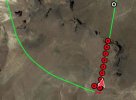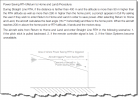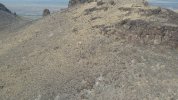So out flying, was exploring a hill that was taller than I wanted to climb, but accessible if needed, and as I was drifting around the hill I found an interesting pillar to film. I neglected to recall that RF sometimes drops when an object gets between the two radios involved. Actually, I knew it was possible, but didn't really expect it to happen here. So - my first mistake was having the audio all off. I did feel the haptic warning, but the red signal warning on the display is small and invisible to me, so I didn't see what the issue was. Hindsight shows it was a weak signal warning. The next warning was lost signal - that was obvious enough it was hard to miss. Then came the dreaded RTH notice. I was a bit frantic. My RTH altitude was set to 180, and I was on top a hill that was several hundred feet above my takeoff altitude. Rereading the manual, 11 seconds. It didn't seem that long.
So, here comes the interesting part - according to RTH protocol, the drone goes to RTH Altitude: 180. But I was flying over a hill that was 600 feet higher than the takeoff point. In theory, the drone should have descended to 180' - well into the ground. I was remembering the manual mentioning RTH Autolanding when it gets near the ground and was thinking I was going to have to hike up and recover the drone. Argh. The drone did descend, but the obstacle avoidance was set to Bypass, and it saw the ground approaching and avoided it by maintaining altitude until it could descend. Once the drone was adequately in front of the pillar, I had control again.
The entire event took about 30 seconds, but taught me a few things about the Mavic Air 2 that reinforced my instinct I needed obstacle avoidance and made me quite happy I did not buy the Mini 2. lol. And no, the back side of the rock was not that interesting, after all.
So, here comes the interesting part - according to RTH protocol, the drone goes to RTH Altitude: 180. But I was flying over a hill that was 600 feet higher than the takeoff point. In theory, the drone should have descended to 180' - well into the ground. I was remembering the manual mentioning RTH Autolanding when it gets near the ground and was thinking I was going to have to hike up and recover the drone. Argh. The drone did descend, but the obstacle avoidance was set to Bypass, and it saw the ground approaching and avoided it by maintaining altitude until it could descend. Once the drone was adequately in front of the pillar, I had control again.
The entire event took about 30 seconds, but taught me a few things about the Mavic Air 2 that reinforced my instinct I needed obstacle avoidance and made me quite happy I did not buy the Mini 2. lol. And no, the back side of the rock was not that interesting, after all.















